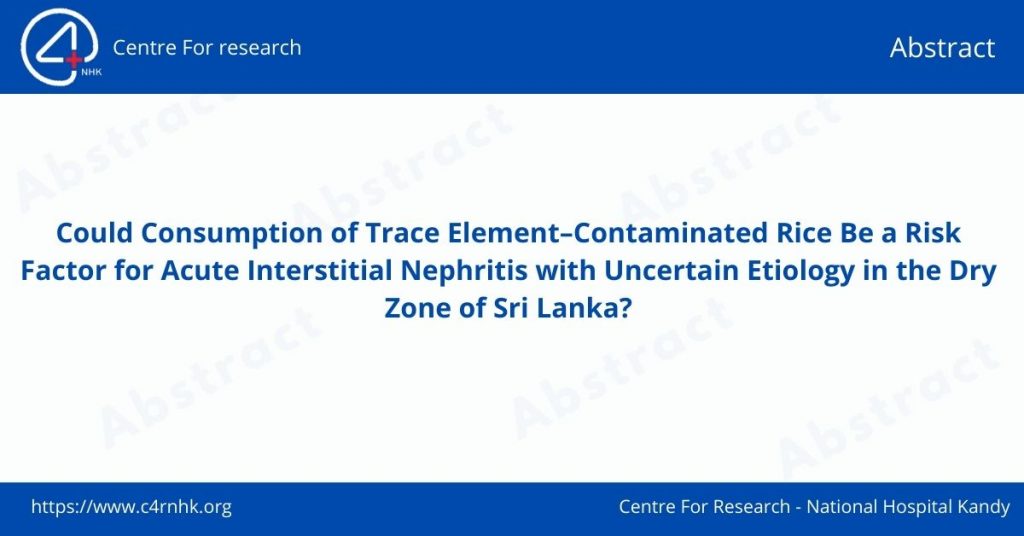Shakila Premarathne 1, Rohana Chandrajith 2, Nishantha Nanayakkara 3, C D Gamage 4, Neelakanthi Ratnatunga 5, Sulochana Wijetunge 5, Zeid Badurdeen 6, Shashika Guruge 7, N Elladeniya 6, K P S Madushan 6, K O C U Samarasiri 6, Pasan Hewavitharane 1, Dulanjali Herath 1, Sachintha Senarathne 8
Affiliations
- Centre for Research, National Hospital, Kandy, Sri Lanka.
- Department of Geology, Faculty of Science, University of Peradeniya, Kandy, Sri Lanka. [email protected].
- Nephrology and Kidney Transplant Unit, National Hospital, Kandy, Sri Lanka.
- Department of Microbiology, Faculty of Medicine, University of Peradeniya, Kandy, Sri Lanka.
- Department of Pathology, Faculty of Medicine, University of Peradeniya, Kandy, Sri Lanka.
- Centre for Education Research and Training On Kidney Diseases (CERTKiD), Faculty of Medicine, University of Peradeniya, Kandy, Sri Lanka.
- State Key Laboratory of Environmental Aquatic Chemistry, Research Center for Eco-Environmental Sciences, Chinese Academy of Sciences, Beijing, 100085, China.
- Department of Geology, Faculty of Science, University of Peradeniya, Kandy, Sri Lanka.
Abstract
Ingestion of toxic trace elements in the human body has been considered one of the major reasons for renal dysfunction. Chronic kidney disease with uncertain etiological factors (CKDu) is a recently described clinical entity in which the disease is found in geographically isolated pockets in the dry zone of Sri Lanka. In CKDu regions, an increasing number of cases are reported with acute interstitial nephritis without any known reason (AINu). However, recent exposure to certain risk behaviors or nephrotoxins, or both, is suspected for the AINu. Consumption of foods that are contaminated with trace elements is one of the main pathways of human exposure to environmental toxins. The current study was carried out to assess the possibility of trace element-contaminated rice consumption on the etiopathogenesis of AINu. Samples of rice consumed by 32 clinically diagnosed AINu cases were collected and analyzed for possible nephrotoxic trace elements. Out of 32 patients, 26 were histologically confirmed with tubulointerstitial disease. The results revealed that the mean values of Cd, As, and Pb were 0.18, 0.055, and 0.135 mg/kg, with ranges of 0.020-1.06, 0.012-0.222, and 0.003-0.744 mg/kg (on dry weight basis), respectively. This study indicated that the investigated toxic trace element levels of rice consumed by AINu were reasonably below the recommended levels of the Codex Alimentarius Commission of FAO and WHO. Hence, it is less likely that rice consumption is to be a risk factor for the etiology of AINu.
Keywords: Acute interstitial nephritis; CKDu; Dry zone of Sri Lanka; Endemic chronic kidney disease; Trace elements.

